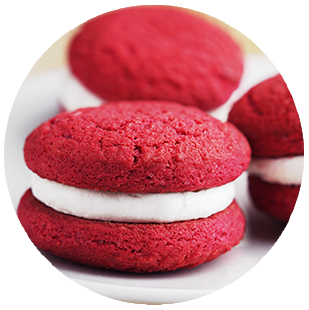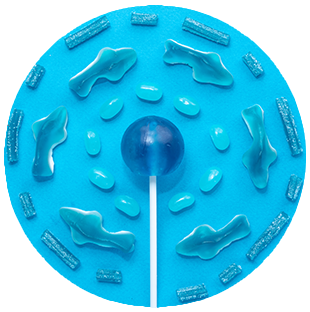Colors from botanical sources existed long before synthetic colors and to a certain extent had lost popularity for a time due to the ease of using synthetic colors in foods and beverages. However, in recent years consumers have increasingly demanded natural ingredients and today it is considered a necessity for many companies. To support these development needs, Sensient’s scientists, agronomists, and other industry experts have worked for years to overcome natural color challenges across the market.
One of the most common challenges developers face is ensuring color stability under heat processing common in the manufacturing of many foods and beverages. From boiling to baking to extrusion, heat processing can create a harsh environment for natural colors. Sensient’s R&D efforts have focused on stabilizing several key colors:
The baking process for products such as red velvet cookies or cakes degrades common natural color solutions in a neutral pH range such as beet juice. The same applies to applications with other types of heat processing, such as extrusion.
Sensient developed a portfolio of solutions called UberBeet™, which includes enhanced beet-based solutions such as SupraRed™, Magna Ruby, and Grand Ruby. These natural colors combine increased concentration with stability improvements over standard beet colors to reach stable red shades under heat processing.
With highly concentrated alternatives developers can use up to 10 times less color compared to a conventional beet, so the product can be a bold, stable red without impacting the texture or taste of the finished good.

Pasteurization and UHT processes are very harsh as well, causing color loss as some solutions degrade under the intense heat. To convert products like strawberry milk, which historically have used heat-stable synthetic colors for pink hues, to natural ingredients, a heat-stable natural pink is needed. Other options such as carmine are available, but often do not meet Kosher or Halal standards for labeling.
Not only does it resist heat processes such as UHT, but it maintains a bright pink tone without the need to overdose the color to achieve the desired hue. Watermelon-Rose™ is the perfect alternative for these dairy or plant-based products to give delicious pink hues that are popular in this segment.

Blue and green tones are hard to find in nature regardless of stability. In processes with a heat step, however, developers face additional challenges in confectionery applications such as gummies or panned gems for baking, since conventional spirulina solutions are not stable in acidic or high heat environments.
Spirulina, by its nature, is not stable at the acidic pH of many products and is not stable under heat processing such as boiling or baking, which is why we have developed a platform called Marine Blue™.
Blue or green tones across the confectionery landscape are no longer an impediment to innovation, and we’re excited to expand this technology further in the future.
